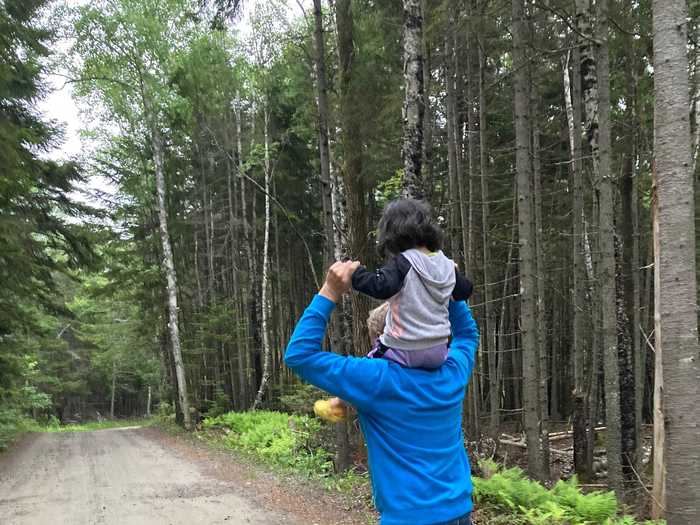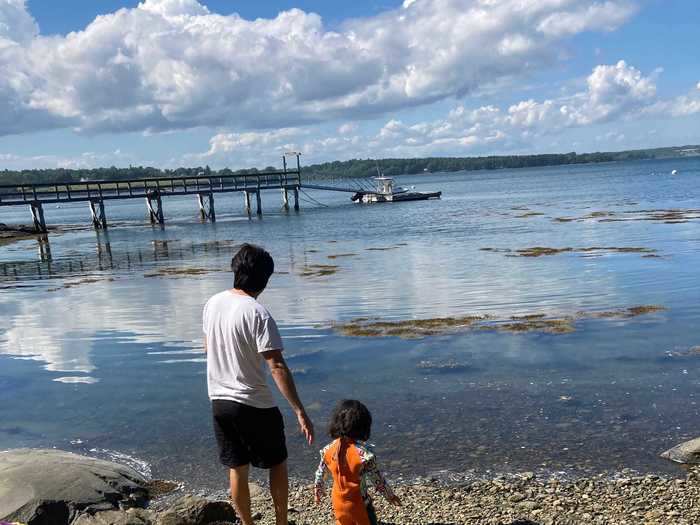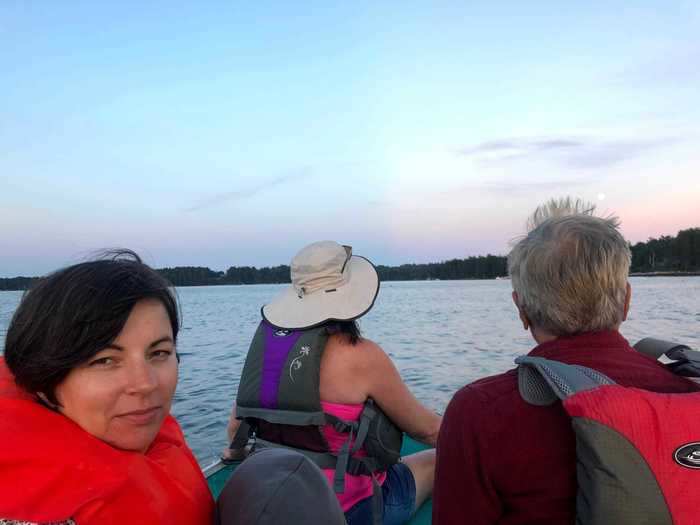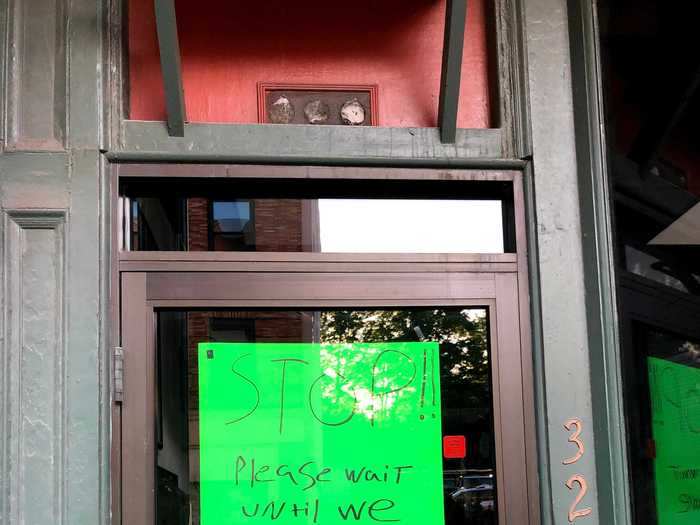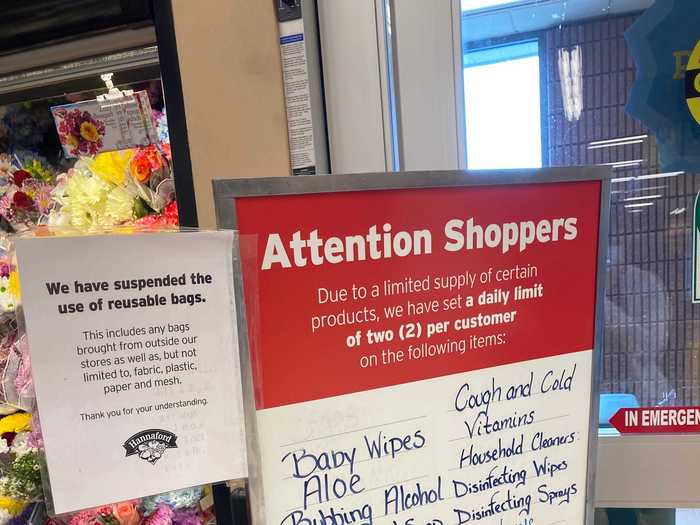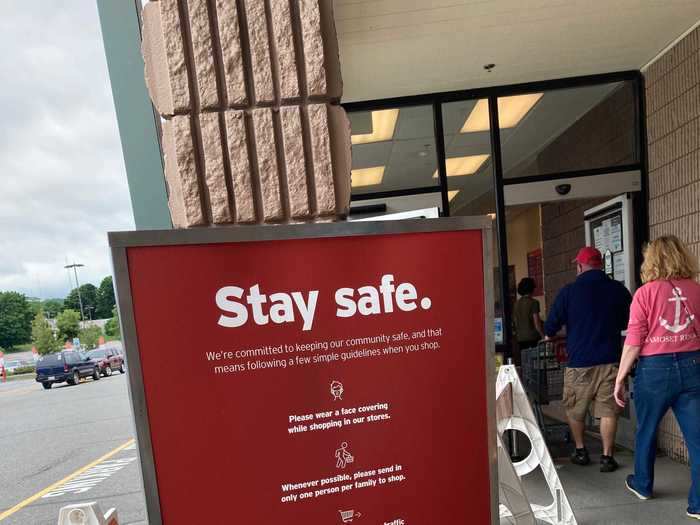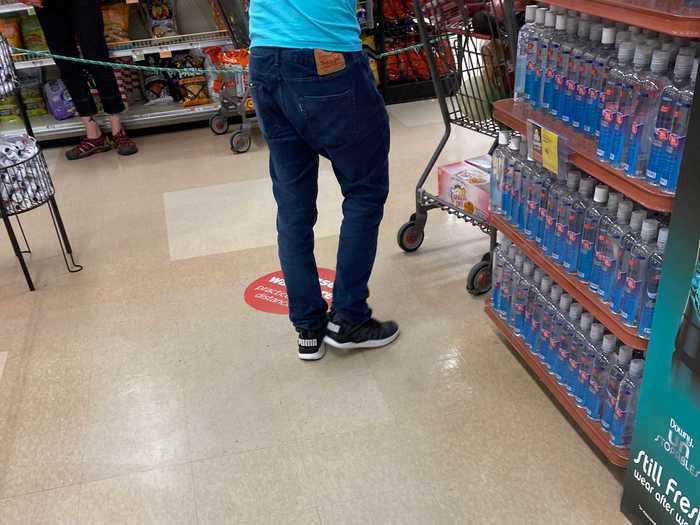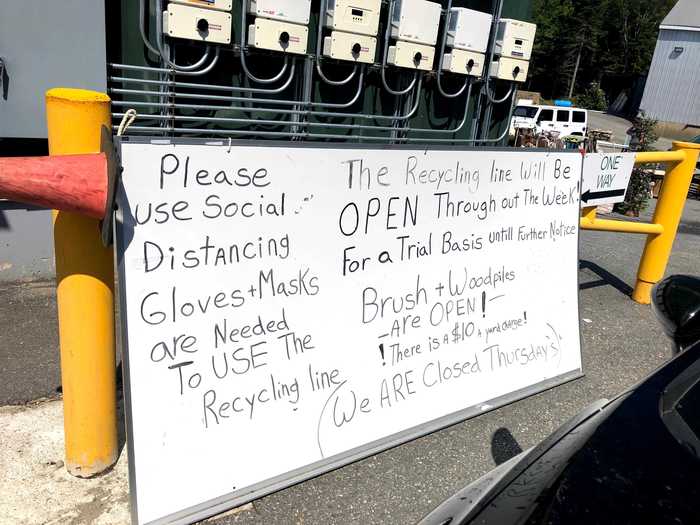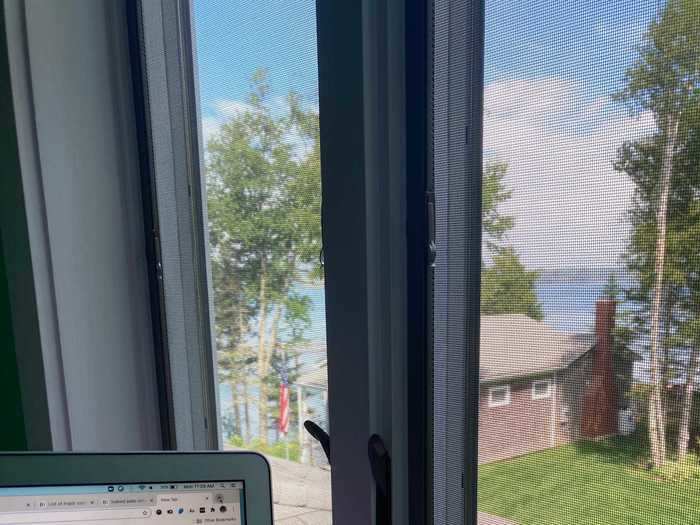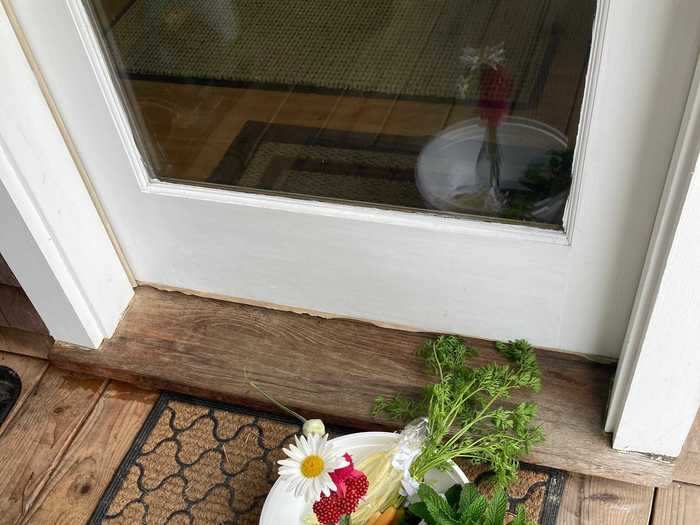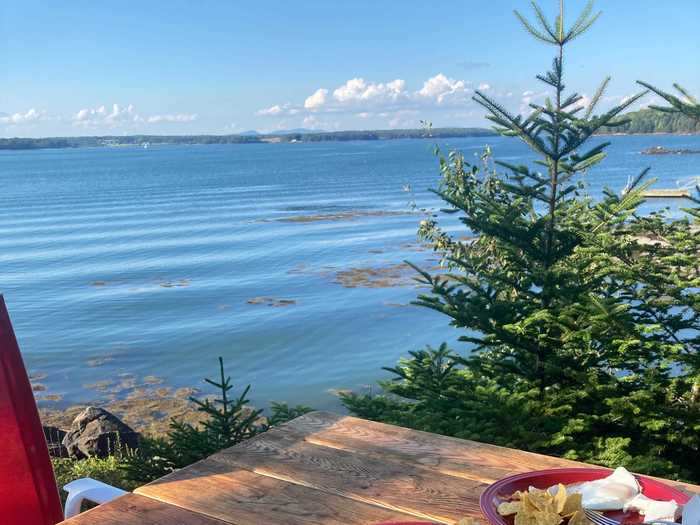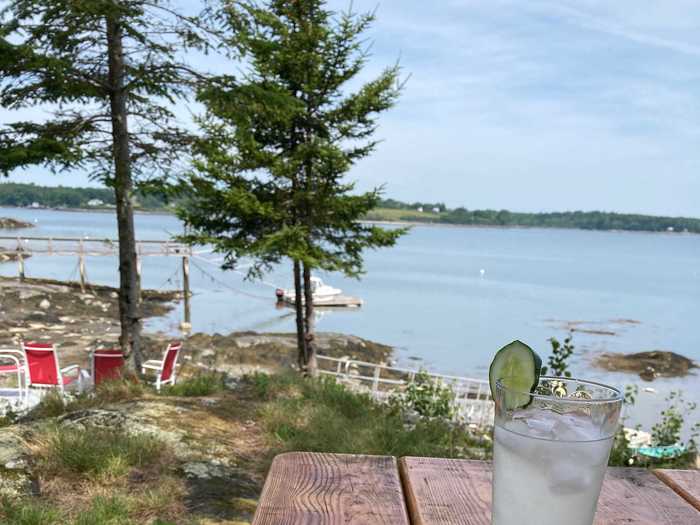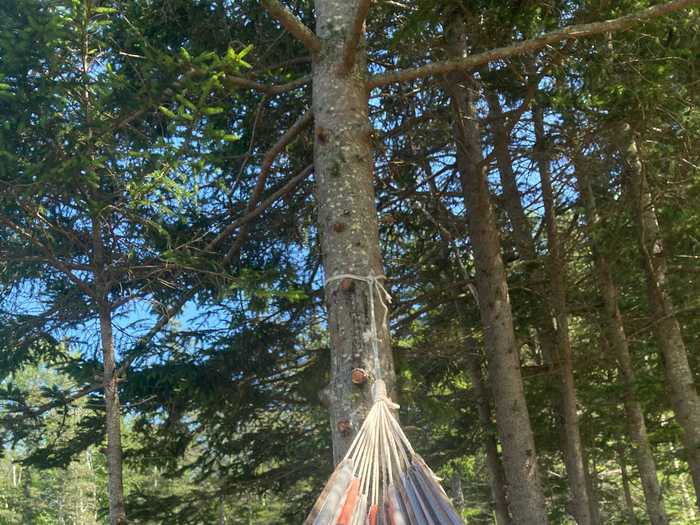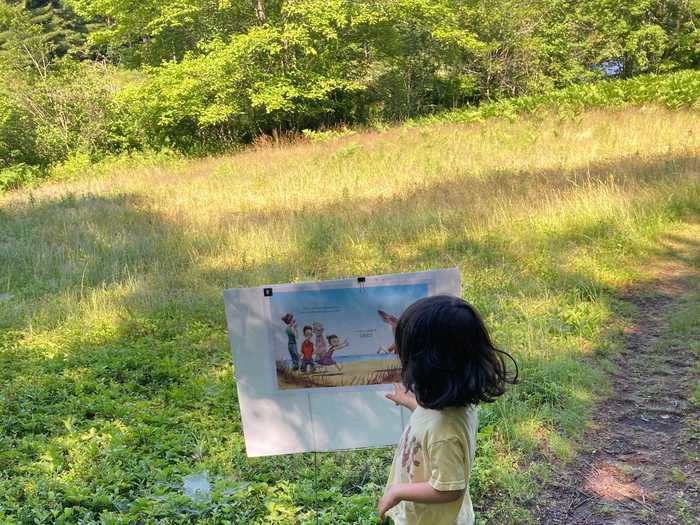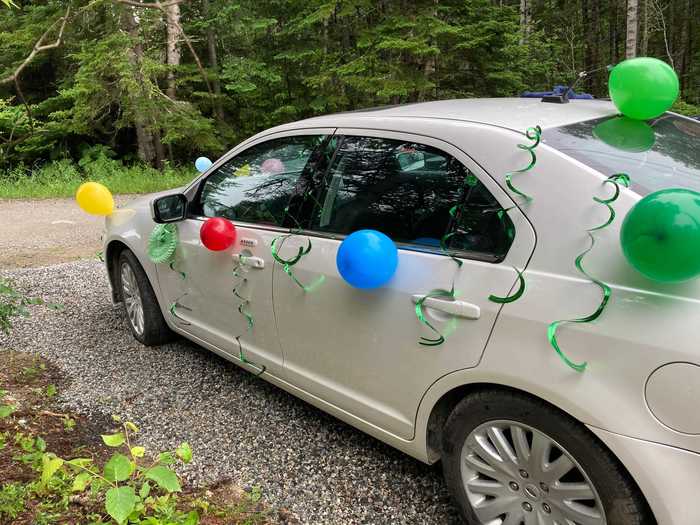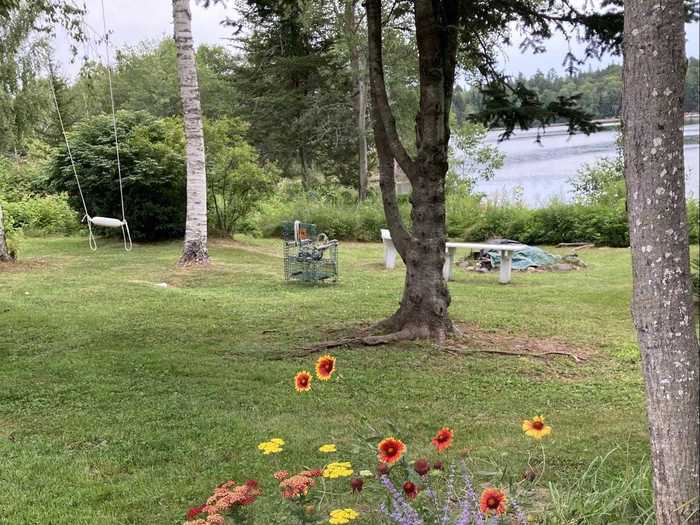A picture of Mary Kearl's view in Maine.Mary Kearl
- A month and a half ago, Mary Kearl, her husband, and their toddler packed their bags and moved from California to a small coastal town in Maine: population 39,772.
- When the pandemic threw a wrench into their original plans to purchase a new home in Southern California, Kearl decided — like many urban dwellers — to move in with her parents.
- Kearl and her family have since adjusted to the pace of rural life, easily keeping a safe distance from neighbors and reconnecting with nature.
Before the start of the pandemic, I was planning to move with my husband and our two-year-old to San Diego county, the second most populous county in the country's most populous state — with an estimated population of 3.3 million.
That's nearly three times the size of the overall population of the state I ended up moving to, Maine, with its estimated 1.3 million residents. And it's nearly 8,300% bigger than the population size of the county I have since become an official resident of, Knox County, population 39,772.
While our own reasons for moving were unique, my family's experience is part of a larger trend some have referred to as "urban flight" and others have declared "the end" of big cities. About 40% of urban dwellers have considered relocating since the start of the pandemic "out of populated areas and toward rural areas," according to a Harris Poll of 2,500 US adults conducted between April 25 and 27, 2020.
And, according to more recent numbers that Pew Research Center reported in July 2020, about one in five US adults knows someone that has moved due to COVID-19. As is the case for my family, about 61% of adults who moved reported that they relocated to live with family and 41% specifically moved in with their parents or in-laws, like my husband and I did.
It's been nearly five months since the start of the pandemic. And the shutdowns that followed that affected our freelance incomes, causing some of our main projects to be canceled, and left my dad, who was going to help us qualify for a loan by cosigning for our mortgage, without a job, becoming one of the millions of unemployed workers in the US.
That's when we put our plans of buying a house in Southern California on hold. As freelancers, we now have to wait at least until January 2021 — when we'll meet the requirement of having two years of self-employed income — to try and qualify for bank financing on our own.
Once home-buying was no longer an option, we weighed our options. We could rent, but would we want to commit to leasing for a year if we could potentially buy somewhere as early as January or sooner if one of us got a full-time job? Would we want to commit to a year with our own incomes still a question? And potentially go a year without seeing our family across the country, as they're no longer an easy plane ride away — especially since we don't feel comfortable flying with a toddler amidst the coronavirus outbreak?
It's now been a month and a half since we packed up our car and moved our family of three across the country in the middle of the pandemic, driving about 50 hours and 3,190 miles from California to Maine. It wasn't a decision we made lightly, but with all the unknowns we were facing, it felt like the best option — to have a place to call home, to be together with my parents, to pool our resources to share our living expenses and childcare, and to have a safe place to keep physical distance from others throughout the potential duration of the pandemic.
We've successfully relocated while taking every precaution we could not to come into close contact with anyone along our journey. We passed through the two-week quarantine period while self isolating in Maine and keeping a physical distance from my family and our new neighbors, and now and have largely been able to self-isolate in a state that's one of the few that's seeing cases drop and in a county that's had only two new cases over the last seven days and 27 cases total — while the state we left has since become a coronavirus hotspot.
Here's what it's been like since I relocated from California to a tiny coastal town in Maine.
We can go what feels like days without seeing anyone — but if we do run into people, it's easy to keep a distance.
Mary Kearl and family.
Mary Kearl
My parents, and now my husband, toddler, and I live on a 1.1-mile gravel loop road. The speed limit is 15-miles an hour and we're more likely to run into a fellow pedestrian or wild animal (think: squirrels, birds, and the occasional snake or deer) than a car.
We walk the loop at least once or twice a day, and we can go days without running into any of our neighbors. Though, when we do, it's easy to keep a distance of more than six feet.
Mary Kearl and family.
Mary Kearl
We also live in front of a tidal river that connects to the ocean and we're often more likely to see people out on the water — where it's easy to have a conversation from a distance.
Mary Kearl and family on the river near her house.
Mary Kearl
People are largely compliant with wearing masks and, so far, there's no shortage of supplies like hand sanitizer, gloves, disinfecting wipes, toilet paper, and paper towels.
Mary Kearl at the store.
Mary Kearl
In the time that we've been here, I've gone into public places only a handful of times — something I'm fortunately able to do as a full-time freelancer working remotely — to the grocery store, pharmacy, and Walmart, to get takeout from a couple local restaurants, to play tennis at a local park, walk the trails at a local library, and get a driver's license at the DMV.
Compared to experiences we've heard about from friends and family living in New York, San Francisco, and other cities with high population densities, I appreciate how easy these experiences have been.
Signage in public places.
Mary Kearl
If we get the timing of our outings right — early in the morning on weekdays — we rarely have to come within six feet of another person. And thanks to Maine's mask requirements, when we are in enclosed spaces, people are almost always wearing masks.
Hannaford, the local grocery store chain, has a table set up at the front where two staff members keep track of everyone coming in to make sure all patrons are wearing a mask.
Signage at the grocery store in Maine.
Mary Kearl
Here, everyone we've seen wears their masks.
Signage outside of the grocery store in Maine.
Mary Kearl
At Walmart, there was an employee who checked for mask compliance, and handed out disposable masks for people to wear inside the store.
An example of social distancing in Maine (Walmart not pictured).
Mary Kearl
While everyone had their masks with them, it looked like only about 50% of people had them on properly so they were covering both their nose and mouth when I went shopping.
Our local DMV had a wait time of two weeks just to be able to book an appointment and another four to six weeks to wait for an appointment, so we drove a half hour further to the state capitol to get our licenses.
We were screened for COVID-19 symptoms and exposure when we booked and showed up for the appointments, and we were required to wear masks and only served one at a time (while the other sat outside in the car). Inside, there was plexiglass separating us from the DMV staff and every employee wore masks and gloves.
We rarely go out in public, but we do have to go to the post office and drop off our trash and recycling.
Social distancing instructions at the recycling center.
Mary Kearl
Because the street we live on is unpaved, we do not have a mailbox that is serviced by the US Post Office and instead have a P.O. Box, where we have to pick up our mail. (Though FedEx and UPS will make deliveries right to our door.)
Similarly, there is no neighborhood garbage pickup or recycling collection service. Instead, we live about a five-minute drive from a place called a transfer station, where we drop off our trash and recycling. At the height of the pandemic, ours was only open two days a week instead of the usual five days and wasn't accepting recycling. (My parents stored their recycling in their basement until the transfer station started taking recyclables again.)
When we go, we're supposed to keep a distance and wear masks and gloves while sorting and dropping off our items by collection type (paper, plastic, metal, glass, etc.).
Phone and Internet service are hit or miss.
Mary Kearl at her home.
Mary Kearl
Having visited my parents in Maine at least once a year over the past several years, I have grown used to the region's slower than average WiFi speeds and inconsistent phone service. As long as we stay on the property or are near another building, such as a neighbor's house or the library, we can usually count on having a cell signal. That goes away quickly once we're out of range of a physical building.
Knowing we were planning to move, my parents tried to get a second wireless router put in, so we wouldn't have to share one WiFi device among four adults browsing the internet and joining video calls throughout the day. However, their provider — the only one offering service in this rural community — doesn't allow customers to pay for more than one router per household. And larger providers don't offer their services in our neighborhood.
We make do by turning the WiFi off on our computers and phones when we're not using them, and I added a 50GB LTE mobile hotspot to my phone plan as part of a bundle for about $10/month so I can use my phone as a hotspot whenever the WiFi service from the router is too weak to get even Google and Google Docs to load.
Given the known digital gap between rural and non-rural America, in which 80% of the 24 million American households lacking access to reliable, affordable Internet are living in rural communities, we're fortunate that these relatively minor inconveniences are the greatest of our accessibility problems.
It's different from city living, but for those looking for space to keep a safe distance, there's plenty of it — and for the foreseeable future, that may be the only thing that matters.
Garden produce and flowers neighbors left for my parents as a surprise.
Mary Kearl
It's a half-hour drive to the closest grocery store and town with traffic lights. There's no two-day delivery, even with Amazon Prime. And the handful of restaurants that are within easy driving distance are rarely open late at night or every day of the week.
Those are the kinds of things that might have seemed worth noting before the pandemic, but right now the conveniences that matter for my family and potentially others considering a move at this time look different: These may include having more space, living further apart from neighbors, being able to safely interact with others at a distance, and living in a community that is largely compliant with wearing masks and following distancing guidelines.
We've had home-cooked food for nearly every meal since arriving.
Kearl's home-cooked meal in Maine.
Mary Kearl
For us, we're lucky that moving to Maine has met all of these requirements and we've traded uncertain circumstances stretched time zones and thousands of miles apart from our family, for the chance to ride out these uncertain times together, sharing the cost of living and taking care of our toddler with my parents.
Kearl's home-cooked meal in Maine.
Mary Kearl
And, in addition to the space we have to enjoy the nature and community around us at a safe distance, for which we are so grateful, there are other small joys to appreciate each day.
A picture of Kearl's view in a hammock.
Mary Kearl
The woodpecker that knocked on our roof the other day, waking us all up, for one.
The impromptu fireworks that are first seen across the water at night, then minutes later — as the sound carries slower over the water — heard.
The neighbors who sell farm-fresh produce and eggs and baked goods on the honor system, leaving the items for sale out in their front yard with a sign listing a price and a tin can where customers can leave their money.
The library that, in lieu of regular programming while closed to the public, scattered poster-size pages of a picture book across its gardens for readers to safely enjoy outside.
Kearl's daughter reading picture books in the garden.
Mary Kearl
The parade we organized for a neighbor’s 90th birthday.
One of the cars decorated for the parade.
Mary Kearl
The physically distanced garden tour the public library recently hosted.
Flowers featured on the garden tour.
Mary Kearl
These and other instances have provided small moments of joy, as we try to do our part to stop the spread of the virus, while working to recover lost freelance income, help my parents job hunt, and deal with other challenges related to the pandemic.
As for what the future and the cold Maine winter will bring for us, we can't be certain, but for now we are taking things one day at a time.

